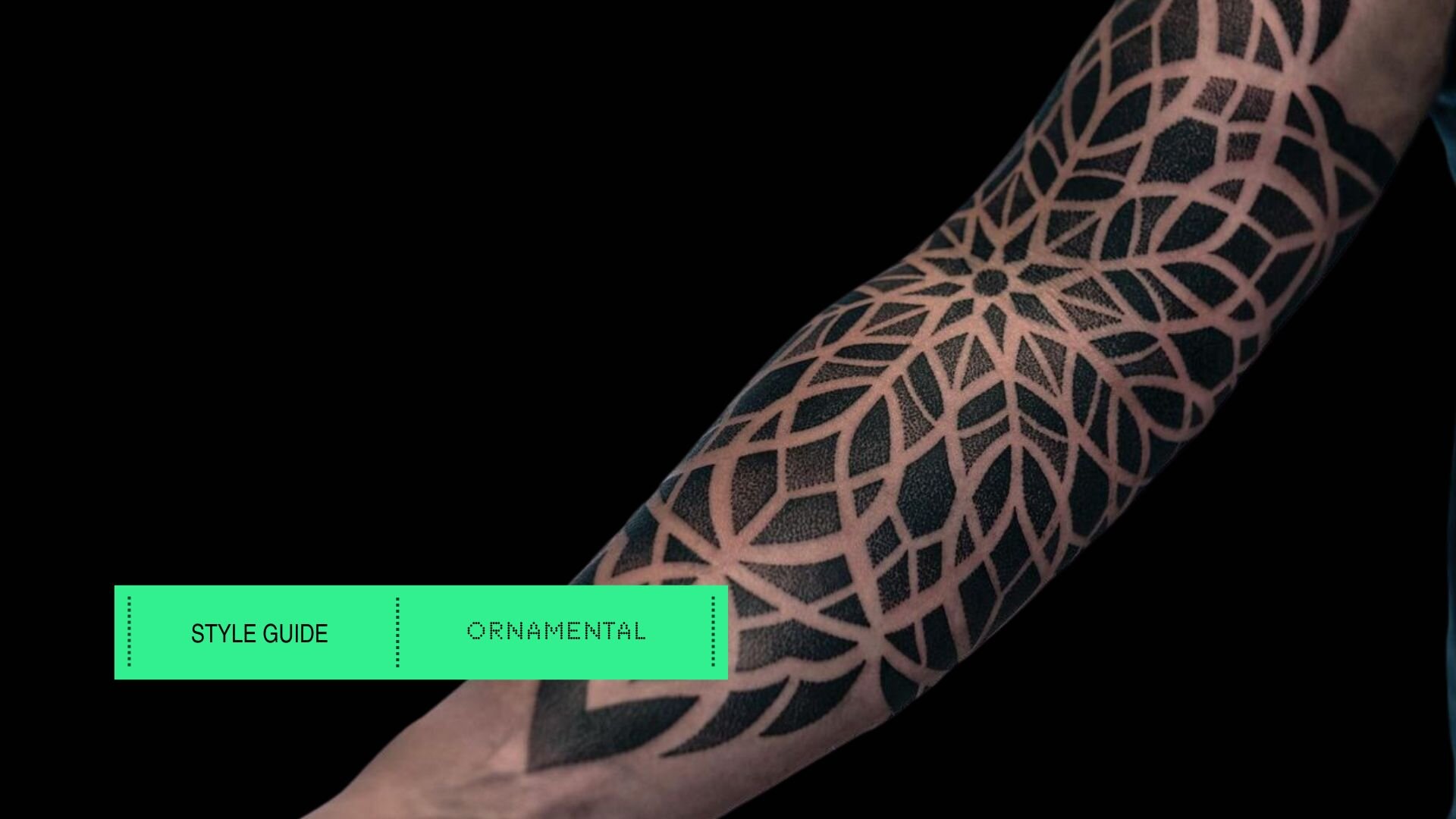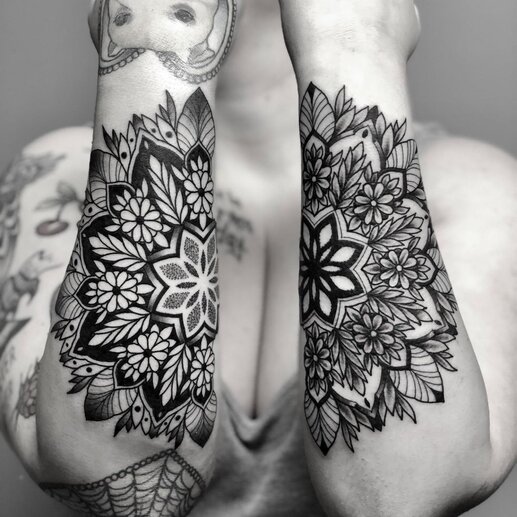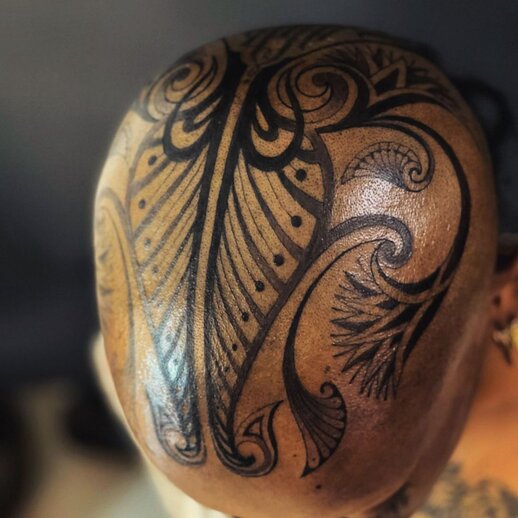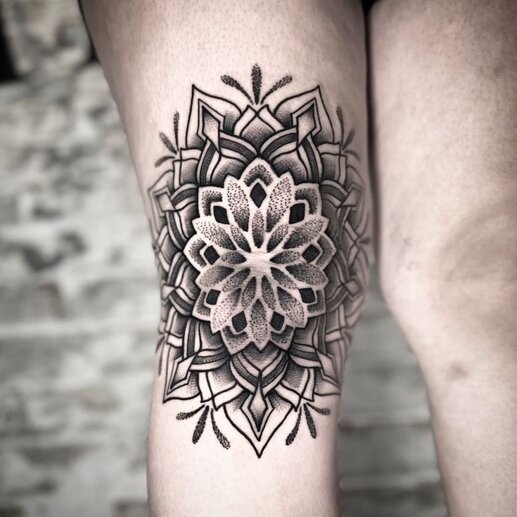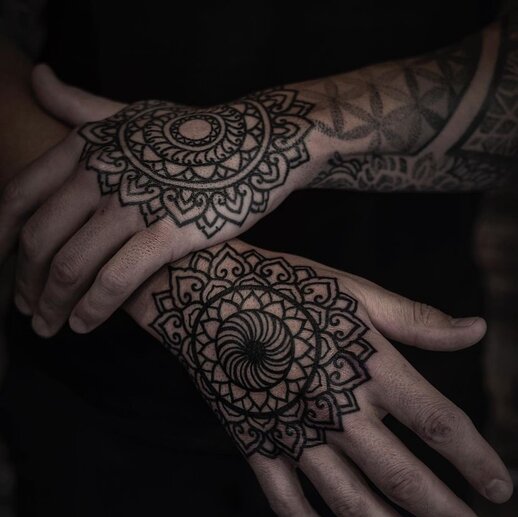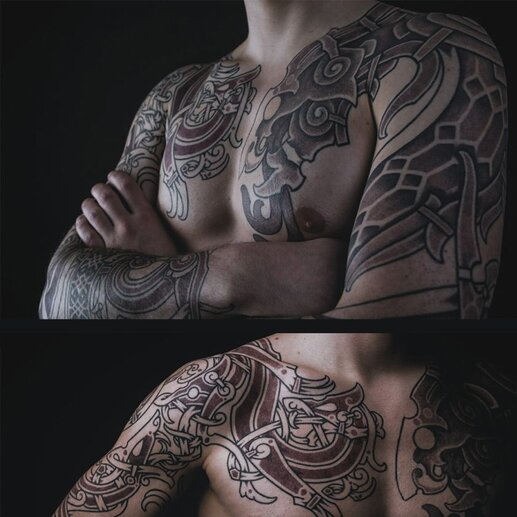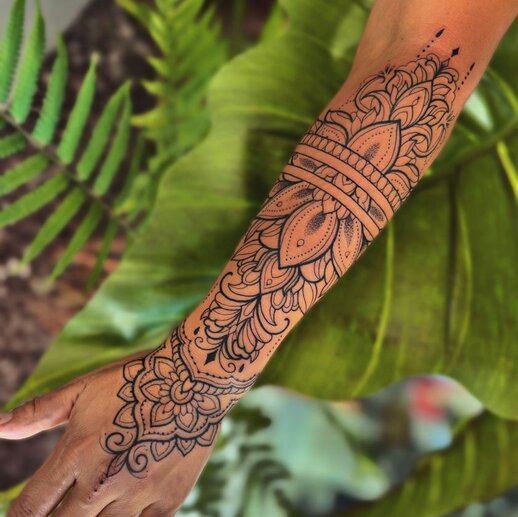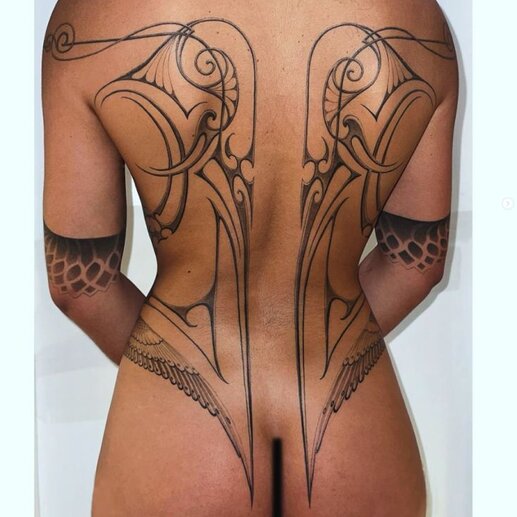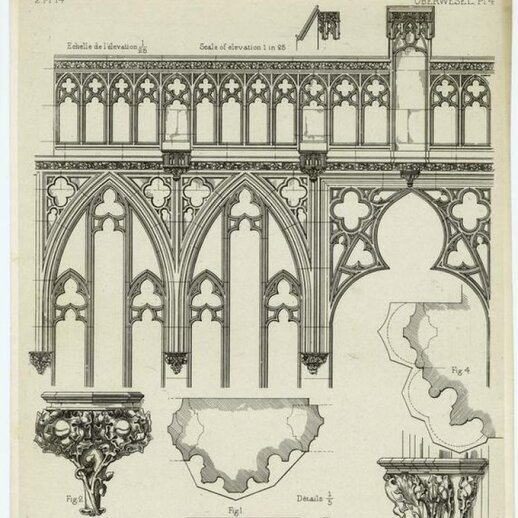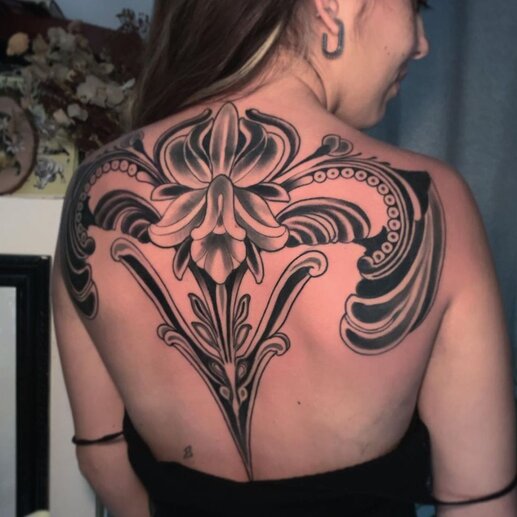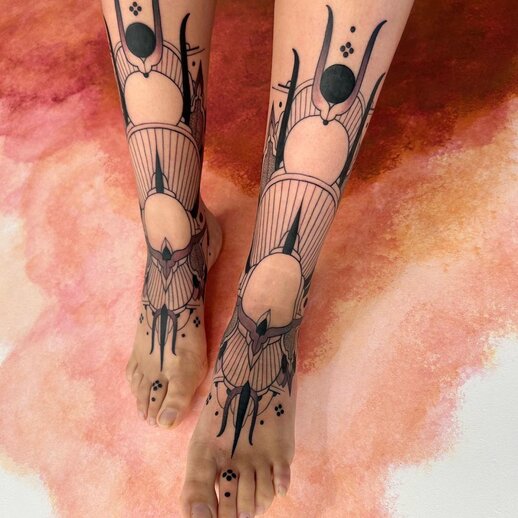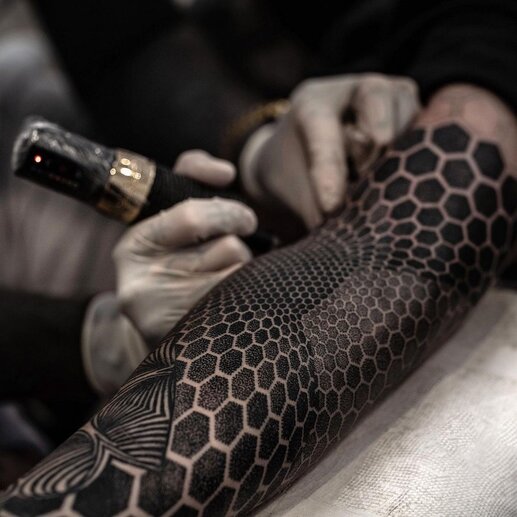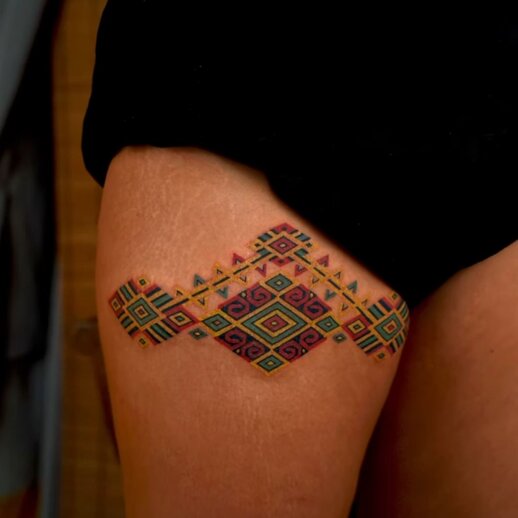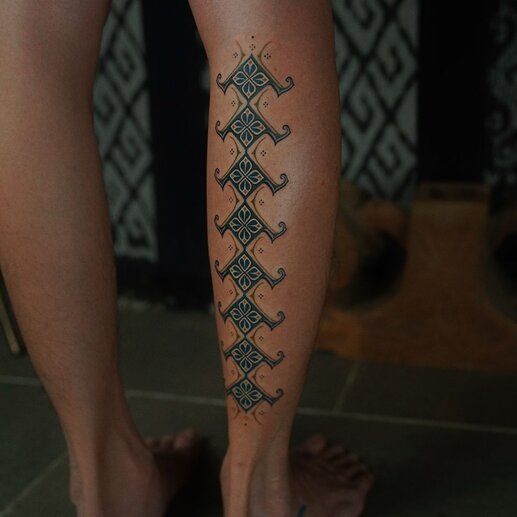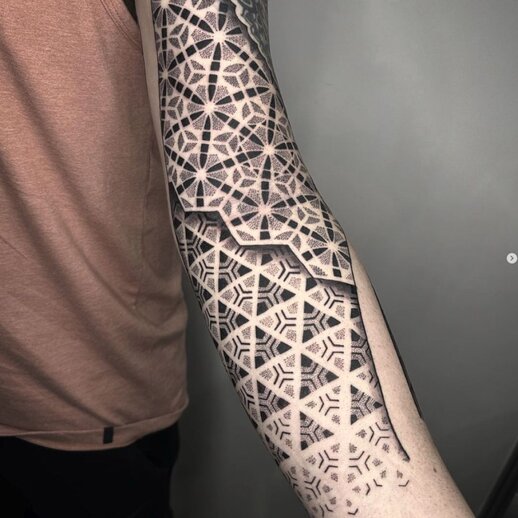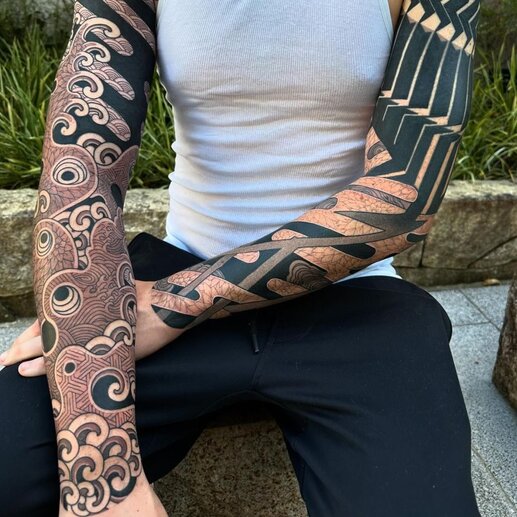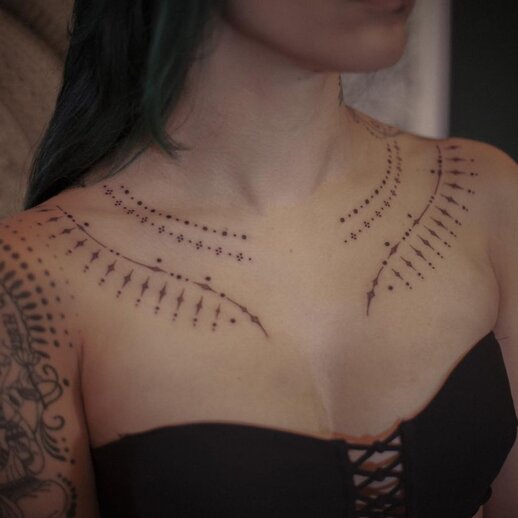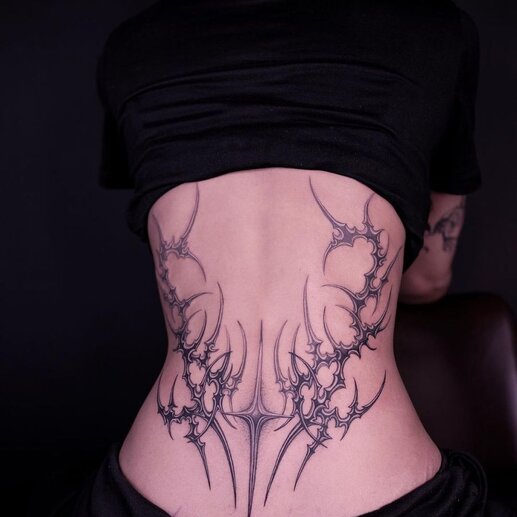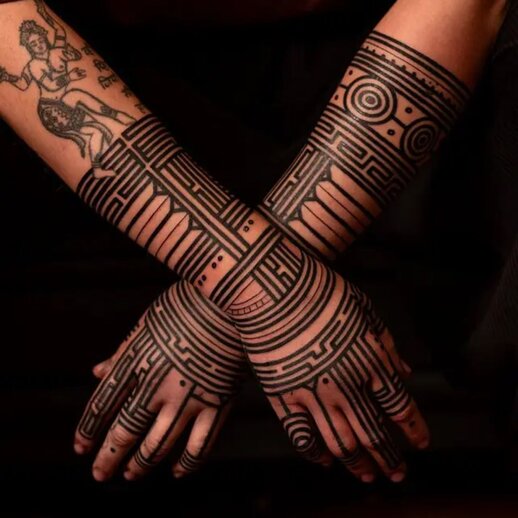Ornamental describes a broad range of decorative and patterned tattoos. Ornamental can describe the function of any tattoo, due to its size and placement, but the term usually describes the overall language of a piece, whatever its function may be. Generally, these tattoos eschew narrative, and while the tattoos can carry deep symbolism, the compositions are largely not figurative. The work of Co:Create artists Anderson Luna, Nick Fierro, Dillon Forte, and Diamante Murru exemplifies the range of aesthetic styles, iconographies, and techniques commonly designated as ornamental. Beyond using the blanket term, ornamental, here we unpack ornamental to introduce starting points for clarifying the elements desired in your own decorative tattoo.
The Co:Create Method
Every tattoo style has a range of expressions. At Co:Create, we acknowledged that range, and are focused on three core considerations for describing the tattoo you want: aesthetic, iconography, and technique.
Aesthetic refers to how the tattoo looks. Line weight, color, saturation, movement with the body all contribute to look.
Iconography examines the meaning attached to the tattoo. We describe the cultural, historical, and spiritual connections chosen imagery carries and communicates.
Technique specifies the methods used to. For example, different techniques of shading (whip, dot, drag, etc.) create different levels of depth and dimension. Color layering, color packing, or distinct forms of linework, all contribute to refining the final form of your tattoo.
Discussing these three elements with your artist helps assure you get your dream tattoo.
Sacred Iconography in Ornamental Tattoos
Many ornamental tattoos draw from sacred iconography. These tattoos may incorporate symbols from Buddhist, Celtic, or Hindu traditions, where repeated patterns of concentric geometric shapes, inclusive of circles, hexagons, lotus petals, can render as smaller tattoos or build to large scale. Whether choosing a Sacred Yantra or infinite Celtic Knot, it is important to consider the aesthetic of your tattoo. For example, fine, precise line work may work best for hyper detailed patterns. Asking for a dotwork shading technique will add depth and dimension to the design of the pattern. Mandalas and knot-based geometric designs are suited to traditional aesthetics, with bold black lines and contrasting colors or black whip shading.
Art & Architectural Iconography
Historic movements in art and architecture can also inspire decorative tattoos. Gothic architecture, with its pointed arches, tracery windows, ribbed vault, renders well in black and gray or traditional aesthetic. In the former, precise shading provides a beautiful contrast between light and dark. In the latter, bold lines express the ornamental nature of the gothic style. Resources like August Pugin’s 1900 book, Gothic Ornament, provide endless opportunities in decorative decisions. Similarly, the ornamental Art Nouveau style, with sinuous, organic lines, gives distinct form to natural patterns (think floral, or even a peacock’s tail). In contrast to both Gothic and Art Nouveau, you may consider the sharper lines and geometric patterns of the Art Deco style. All of these movements imbue meaning in composition. Each has considered, for example, ideas of opposition: abstract vs. figurative, organic vs. geometric.
Natural Inspirations for the Decorative Style
Another source of decorative exploration are natural tessellation patterns, including hexagonal shapes from a honeycomb or diamond shapes on snake skin. Like with sacred iconography employing tight concentric geometries, tessellation patterns are suited to a blackwork aesthetic. Technically, fine lines allow for dot work shading or the use of negative space as outline allows for deep black shaping of the pattern.
Aesthetic Driven Designs of the Decorative Style
Decorative designs following the natural curves of the body, creating symmetrical patterns across back, chest, legs, or shoulder, focus on aesthetic rather than iconography. These tattoos ornament the body and employ blackwork techniques of typically wider line width to create clean, clear rhythm. Another version of this type of decoration comes from tattoo artists who remove graphic elements from narrative tattoos in order to compose something new. Japanese tattoo artist Nissaaco, for example, employs traditional Japanese patterns as an approach to composing non-narrative tattoos. These are defined by the usage of the pattern, removed from elements of Japanese mythology that form the basis of Irezumi.
Exploration of technology and modern society also yields strong basis for ornamental and decorative tattoos. Cyber sigilism, a contemporary adjunct to biomechanical, mixes the “cyber” with the mysticism of the past. Thin black lines typify cyber sigilism, and the aesthetic can manifest in different scales and across different body parts.
Conclusion
While you might start your journey with the words ornamental or decorative in mind, refining the iconography, aesthetic, and, even, technique, you want results in finding the best match for your tattoo. Defining desired aesthetic (i.e. black and gray or traditional) will help you find the tattoo artist best suited to your intention. A clear source of inspiration assists in explaining the composition of your tattoo, and it might steer you to someone with deep, shared interest in the style or subject matter.
Keeping iconography, aesthetic, and technique in mind allows for precise conversation with your chosen tattoo artist and the most successful tattoo. Most tattoo artists will identify with these terms, which are concrete, rather than the abstract term, ornamental.
Explore all the worlds best tattoo artists on Co:Create
